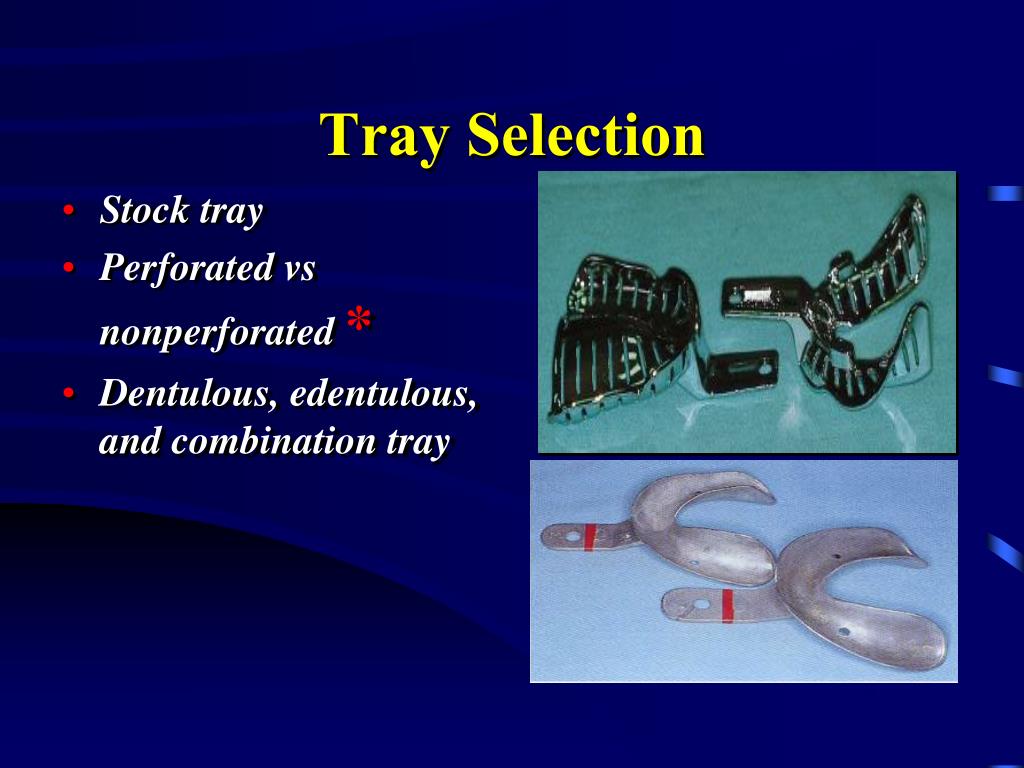


Trays for alginate are perforated to allow mechanical retention to retain alginate in the tray.Alginate has low tear strength and requires adequate bulk to remain intact on removal.The spacing between the tray and the tissues should be increased according to the depth of undercut, tear strength and elastic limit of the impression material.This type of custom tray can be used with alginate, elastomeric and impression plaster impression materials.Large undercut areas prohibit the use of close-fitting trays as removal from the mouth without causing distortion would be difficult and removal from the cast model would cause fracture of the cast.This allows the clinician’s fingers to exert pressure on the base plate evenly along the entire impression tray after seating the impression. The height of the handle should be such that it is level with the top of the lip and should extend distally around the ridge to the premolar region. Avoiding distortion of the labial sulcus. The handles for close-fitting trays are best designed to be intraoral.Where these are unavailable, a medium-bodied silicone material may be used.Usually used with impression materials that are non elastic or rigid once set, typically zinc oxide eugenol paste.They allow pressure to be exerted on the denture-bearing area during the impression-taking procedure.
A MAXILLARY ALGINATE IMPRESSION ROUTINELY REQUIRES FREE
Where the majority of the denture-bearing area is free from large undercuts, closefitting trays should be used.In selection of an impression tray and material, the primary considerations are the amount of undercut present and whether any areas of the mucosa are mobile or unsupported. WHAT TO CONSIDER WHEN SELECTING AN IMPRESSION TRAY AND MATERIAL?



 0 kommentar(er)
0 kommentar(er)
